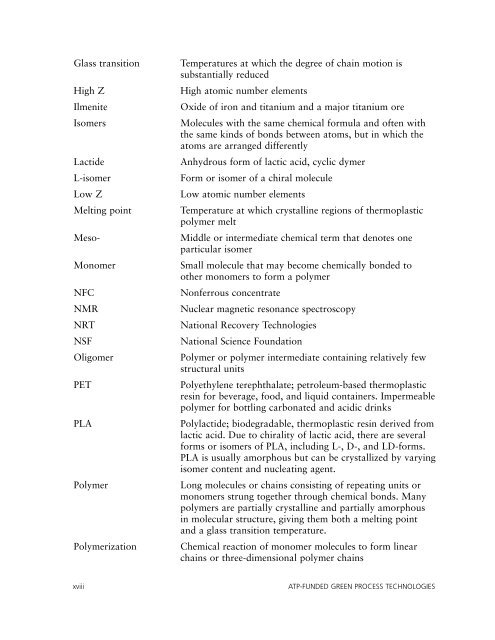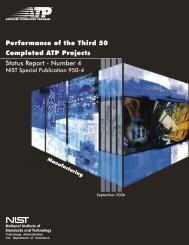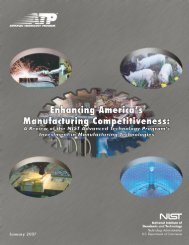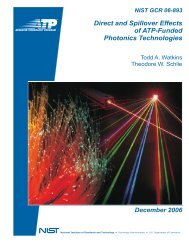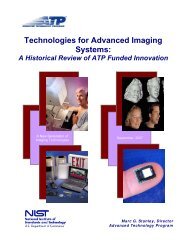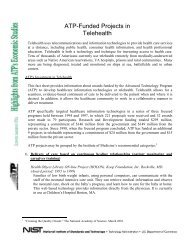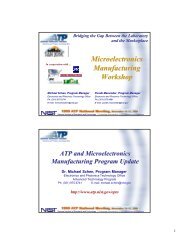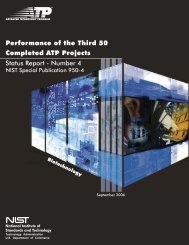ATP-Funded Green Process Technologies - NIST Advanced ...
ATP-Funded Green Process Technologies - NIST Advanced ...
ATP-Funded Green Process Technologies - NIST Advanced ...
You also want an ePaper? Increase the reach of your titles
YUMPU automatically turns print PDFs into web optimized ePapers that Google loves.
Glass transition<br />
High Z<br />
Ilmenite<br />
Isomers<br />
Lactide<br />
L-isomer<br />
Low Z<br />
Melting point<br />
Meso-<br />
Monomer<br />
NFC<br />
NMR<br />
NRT<br />
NSF<br />
Oligomer<br />
PET<br />
PLA<br />
Polymer<br />
Polymerization<br />
Temperatures at which the degree of chain motion is<br />
substantially reduced<br />
High atomic number elements<br />
Oxide of iron and titanium and a major titanium ore<br />
Molecules with the same chemical formula and often with<br />
the same kinds of bonds between atoms, but in which the<br />
atoms are arranged differently<br />
Anhydrous form of lactic acid, cyclic dymer<br />
Form or isomer of a chiral molecule<br />
Low atomic number elements<br />
Temperature at which crystalline regions of thermoplastic<br />
polymer melt<br />
Middle or intermediate chemical term that denotes one<br />
particular isomer<br />
Small molecule that may become chemically bonded to<br />
other monomers to form a polymer<br />
Nonferrous concentrate<br />
Nuclear magnetic resonance spectroscopy<br />
National Recovery <strong>Technologies</strong><br />
National Science Foundation<br />
Polymer or polymer intermediate containing relatively few<br />
structural units<br />
Polyethylene terephthalate; petroleum-based thermoplastic<br />
resin for beverage, food, and liquid containers. Impermeable<br />
polymer for bottling carbonated and acidic drinks<br />
Polylactide; biodegradable, thermoplastic resin derived from<br />
lactic acid. Due to chirality of lactic acid, there are several<br />
forms or isomers of PLA, including L-, D-, and LD-forms.<br />
PLA is usually amorphous but can be crystallized by varying<br />
isomer content and nucleating agent.<br />
Long molecules or chains consisting of repeating units or<br />
monomers strung together through chemical bonds. Many<br />
polymers are partially crystalline and partially amorphous<br />
in molecular structure, giving them both a melting point<br />
and a glass transition temperature.<br />
Chemical reaction of monomer molecules to form linear<br />
chains or three-dimensional polymer chains<br />
xviii<br />
<strong>ATP</strong>-FUNDED GREEN PROCESS TECHNOLOGIES


